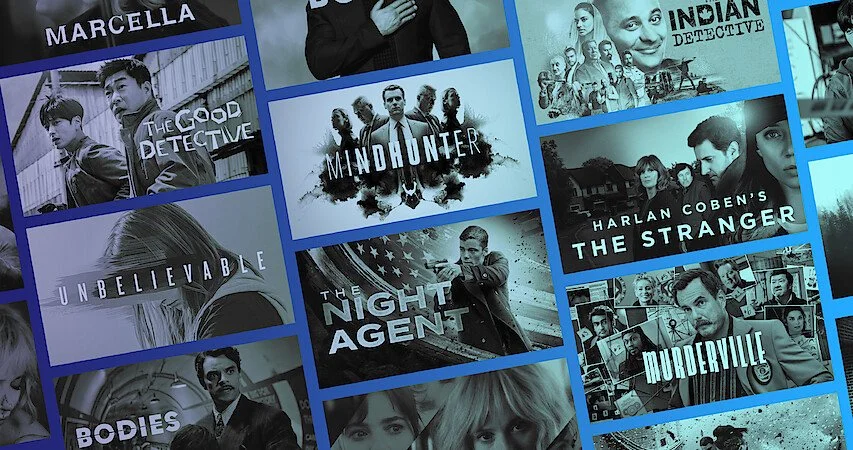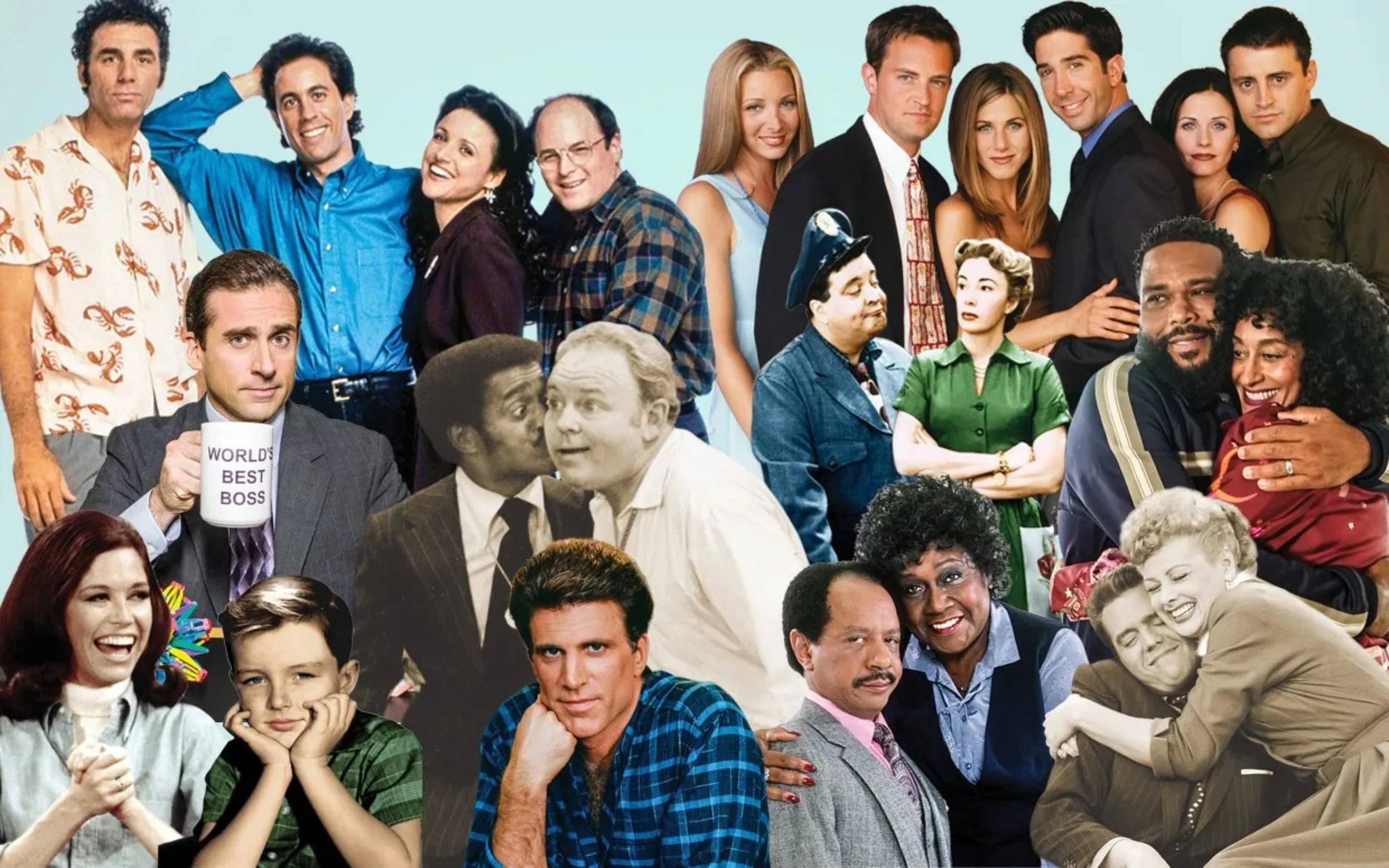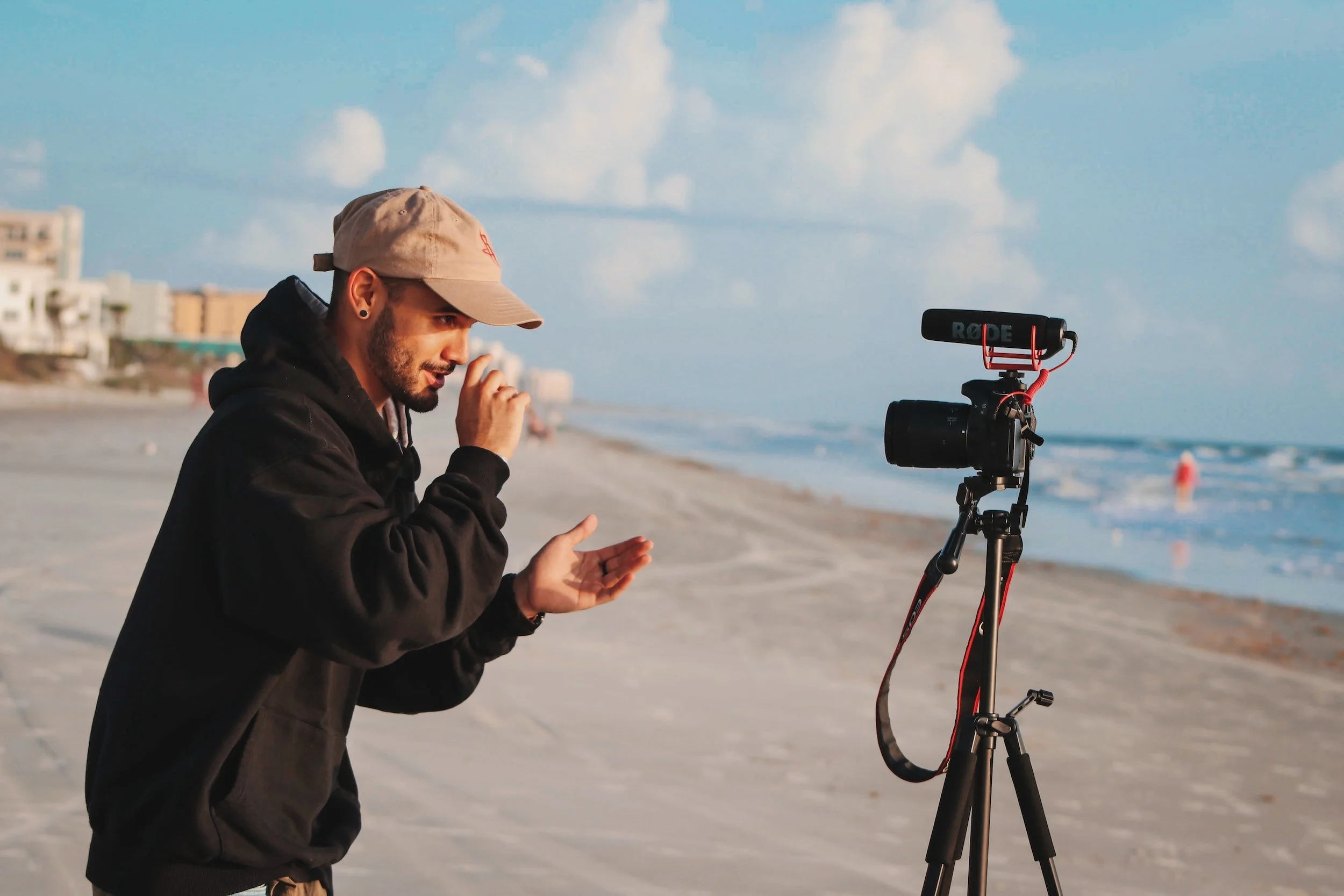he current era of television feels most like the decade preceding ‘New Hollywood’ in the 1970s, the fall of big budget movie musicals and an industry wide scramble to find out what comes next. Television is in some ways returning to the old model with commercial breaks and digital bundles, but television as a medium and an industry has been forever changed by the birth of prestige television. The lessons that are learned from this time will likely dictate the next fifty years of American television.
Part Two: Streaming vs. Streamers - A Stand-Off
Since streaming became mainstream, major changes in sitcom preferences have come to light. According to analytics, the demand for sitcoms varies by streamer with viewers preferring network sitcoms to those created strictly for streaming. Not only that, but the same study shows that the sitcom was the most in demand sub-genre of television in-demand in 2022. Part One of this research discusses the top ten most streamed shows in the U.S. in 2023.
Part One: Streaming vs. Streamers - A Stand-Off
The creative standstill between viewers and streamers has come to a head. As streaming slowly inches its way to overtaking the conventional ways of watching television, the divide between what viewers want and what is being produced grows. Audiences have made it clear that they prefer the formats of the past overcurrent releases, but streaming companies are refusing to make changes to their current format, especially regarding the sitcom.
Horizon 2028 Part 2: Audience and Industry Interview Perspectives
Horizon 2028 Part 1: The Future of Global Content Licensing
This report considers content and distribution strategies that allow Paramount Global Content Distribution (PGCD) to maximize subscriber growth and external licensing revenue. Given the symbiotic nature of licensing deals among studios, the research team focused on how PGCD can remain competitive in the streaming landscape with a balanced mixture of internally and externally licensed properties.
Strategies in the Streaming Industry: Bally Sports as Case Study
This case study for Bally Sports shows that sports fans’ top priority for streaming is accessible, reliable, and interesting content. As a result of these findings, the recommendations to maintain longevity in the streaming industry focus on the importance of brand awareness, user experience, representative content, and potential partnership integrations.
How NFTs Have Changed the Creator Economy
Content creators have thrived on Web2 platforms such as Youtube, Instagram, and Twitter. However, with the latest addition of platforms such as Twitch and Patreon, curating content has been enhanced by enabling direct creator-to-fan content and new methods of monetization. The implementation of Web3 technologies, more specifically non-fungible tokens (NFTs) are revolutionizing the way creators distribute content, claim ownership, and monetize work.
TBT: Innovation, Technology, & Theatre
Spotify's Algorithm: Helping or Hurting Musicians?
The year is 1870, 7 years before the invention of the phonograph by Thomas Edison. As a musical artist, if you wanted to distribute your content to an audience, you did so through sheet music, either painstakingly copied by hand, or if you were lucky, replicated on some kind of a printing press. Music distribution has come a long way since then. Artists can upload music to platforms like TikTok or YouTube with the click of a button. But how has this changed the industry?
The most prolific way that people engaged with music in 2020 was streaming platforms, of which, Spotify continues to be the most popular. Even though it’s easier than ever for artists to upload content to a large audience, the question remains, are personalization algorithms and streaming services through Spotify harming or helping musical artists?
An Industry of Secrecy: Why Streaming Companies Hide Viewership Data
The entertainment industry in a post-pandemic and streamer-heavy world bears a sigil of secrecy. Viewership data for films and television shows on Netflix, Hulu, Amazon Prime Video, HBO Max, Disney Plus, Apple TV Plus, and other streaming services is highly monitored behind closed doors at these companies. Streaming consumption skyrocketed at the beginning of the COVID-19 pandemic, as people around the world were forced to stay at home. During the same time, online TV/video consumption increased from 1.7 hours to 6.5 hour. The pandemic fast-tracked the world’s shift to streaming, as it became one of the only accessible entertainment platforms, forcing the general public to decide which streaming services to invest in, largely because of cost.
Declining Super Bowl Viewership: Will it Maintain Most-Watched Event of the Year?
While the Super Bowl has managed to remain the most-watched live event of the year, it has not managed to maintain its robust viewership numbers in the age of cord-cutting and media saturation. Despite the trend of lower viewership, there is one instance that raises audience interest, but it remains outside of the NFL’s direct control: too-close-to-call games. Thus, there is the possibility that viewership has decreased simply due to an increase in uninteresting games in the past few years. If there’s anything the many close games this past football season, and subsequent increase in viewership, can teach us, it’s that viewers enjoy watching competitions that are truly anyone’s game.
The Importance Of Audience Consumption Data In The Entertainment Industry
Since the 1980s, it has been industry practice to measure the number of viewers consuming films and television. These measures affect the industry in multiple ways, from advertising sales to cultivating future viewers, and often contribute to the project’s success. As streaming continues to pivot the entertainment industry, other services will begin to release viewership data in a similar fashion. This crucial step in releasing streaming viewership data has the potential to set a new dawn for streaming services: one where data and transparency lead the way into a more informed and impactful industry.
Theatrical Livestreaming: Fostering the Next Generation of TheatreMakers
In my previous AMT-Lab article, Livestreaming And Live Theatre: A Promising New Industry, I presented the data and specifics of the current livestreaming market as a whole. During this research, I found that livestreaming viewership set record highs in 2020. Not only was livestreaming able to grow during the initial impact of the pandemic, but this interest was maintained throughout 2020 and into 2021. Livestreaming, as an industry, grew by 81% in 2020. The large potential for market utilization is undeniable. Most importantly, however, is that livestreaming theatrical events offer a level of access and opportunity to arts and cultural events that have yet to be capitalized.
Streaming Service Algorithms are Biased, Directly Affecting Content Development
Despite the Covid-19 pandemic, 2020 was a big year for the entertainment industry. Many entertainment corporations reevaluated their approach to content distribution and accessibility for viewers. It is increasingly clear that streaming services will continue to exert evolutionary change on the entertainment industry. Regardless of the questions and problems posed about the algorithms used by streaming services, Netflix and other dominant platforms will continue to use them – and continue to work on optimizing the algorithm to eliminate at least the most egregious biases. It is up to the industry to hold itself accountable and ensure that the sanctity of the art of TV and film over the algorithm-based entertainment world.
How Streaming Services Use Algorithms
The Streaming Wars in 2021: Netflix, HBO Max, and Disney+
Streaming services have won the battle over the box, and now the streaming war is in full gear. Netflix, HBO Max, and Disney+ have taken differing approaches to capturing a competitive advantage to be the top streaming service users turn to. Read about where they stand in this research by Helen Hejran.
Guidelines for Using Aggregate Streaming Platforms for Performing Arts Content
For arts organizations looking to reach audiences through online content, there are numerous approaches, including posting subscriber-only content to their websites and posting free videos on platforms like YouTube. In the broader entertainment landscape, streaming via services that aggregate content has become a popular way to watch film and television. This article examines the viability of sharing performing arts content on third-party streaming platforms that aggregate content as opposed to single-entity streaming channels.
Video Streaming Trends for Performing Arts Organizations
Performing arts organizations are facing unexpected pivots to sharing their content digitally in 2020 due to the Covid-19 pandemic. Many of these organizations are confronting entirely unfamiliar methods of distribution, launching head-first into the vast world of streaming. To embrace the opportunities of such a shift, organizations must consider the benefits and risks of the various methods within the ever-evolving digital landscape.
The Streaming War During the Covid-19 Pandemic
The Covid-19 pandemic has drastically disrupted all business sectors, including the arts, culture, and entertainment industries. Unfortunately, the Covid-19 pandemic’s impacts are far more permanent for an audience-oriented industry that requires a high level of engagement. The business model might be fundamentally changed and there will certainly be a shift in how content is produced and consumed. While lockdowns and social distancing measures to contain the pandemic have had a huge impact on the traditional movie industry, the video streaming model seems to be the greatest beneficiary in this difficult time as people are isolated at home, which is the ideal condition for binge-watching. This white paper looks at the status of the streaming industry before and after the first Covid-19 outbreak.
Orchestras' Post-Pandemic Digital Future
There is no use in waiting for the world to “go back to normal”: orchestras need to keep pushing forward and adjusting to the new reality. Covid-19 has proven, yet again, that people are interested in classical music, that it can and should have a stronger online presence, and that it has the power to bring peace—especially in times of uncertainty. Orchestras need to stake their place and assert their relevance in society. I envision a world where orchestras operate using “two stages”: one physical and one digital.

























